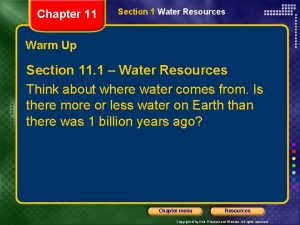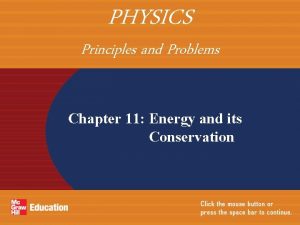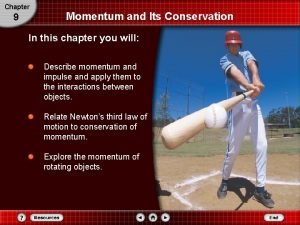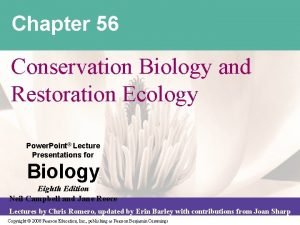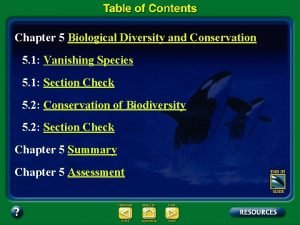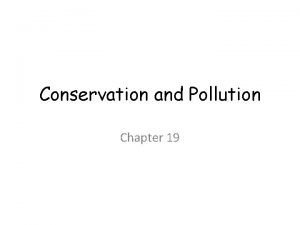Conservation and Pollution Chapter 19 Conservation Conservation is







- Slides: 7

Conservation and Pollution Chapter 19

Conservation • Conservation is the wise use of the environment. Land, water and organisms are protected for future generations.

Pollution • Pollution is caused by substances which make the environment unpleasant and dangerous for living things. • The 3 types of pollution are: – Water pollution – Air pollution – Soil pollution

Water pollution. • Caused by Sewage and Slurry which reduces the amount of Oxygen available to fish and other aquatic organisms. • Fertilisers which cause algal bloom. • Oil which poisons seabirds and kills fish.

Air pollution • The main cause of air pollution is the burning of coal, oil and other fuels. • 1. Smoke and dust- Irritate the lungs causing bronchitis. Smog is a mixture of smoke and fog. • 2. Sulphur Dioxide- caused by the burning of fossil fuels. Causes acid rain. • 3. Carbon Monoxide and Lead Poisoning. - Caused by the burning of petrol and Diesel. • Air pollution can be prevented by using lead free petrol, smokeless fuels and the release of chemicals.

Soil Pollution • Soil pollution is caused by pesticides, artificial fertilisers and acid rain • Pesticides can be carried in the food chain • Fertilisers can cause river pollution • Acid rain can make the soil more acidic.

Waste management and recycling • Waste management is the careful use of incineration, landfill sites and dumping at sea , so as not to harm the environment. • Materials such as glass, paper some metals and plastics can be recycled. • Living organisms affect the environment in positive ways as well as in negative ways
 Chapter 12 section 1 what causes air pollution
Chapter 12 section 1 what causes air pollution Chapter 11 section 3 water pollution answer key
Chapter 11 section 3 water pollution answer key Chapter 11 section 3 water pollution
Chapter 11 section 3 water pollution Chapter 12 air section 1 what causes air pollution
Chapter 12 air section 1 what causes air pollution Chapter 11 study guide energy and its conservation
Chapter 11 study guide energy and its conservation A 1875 kg car going 23 m/s
A 1875 kg car going 23 m/s Chapter 56 conservation biology and restoration ecology
Chapter 56 conservation biology and restoration ecology Chapter 5 biological diversity and conservation
Chapter 5 biological diversity and conservation


